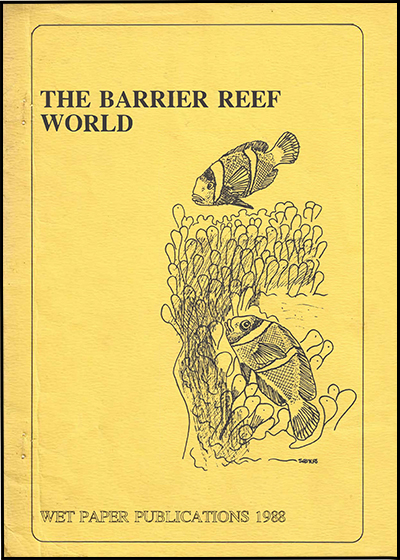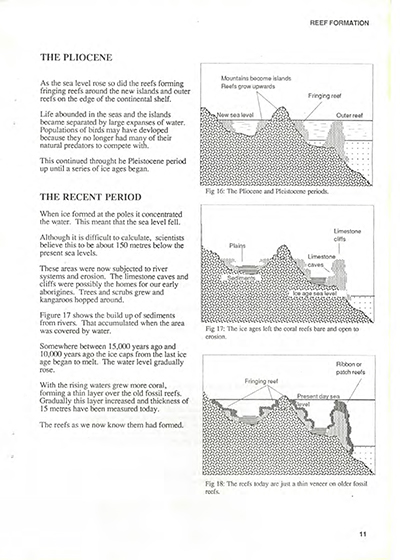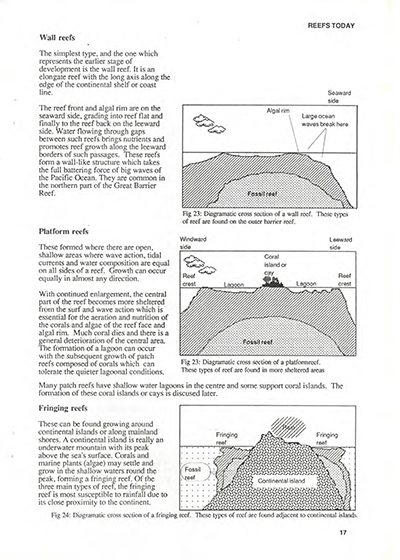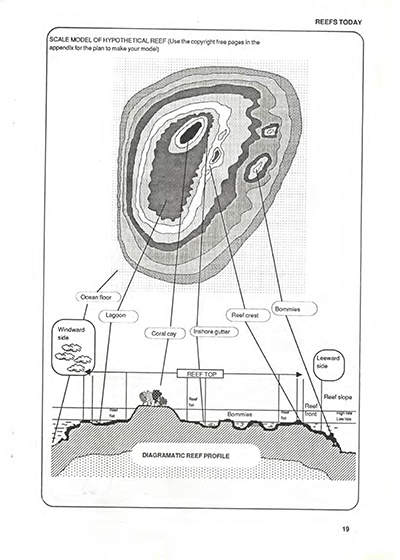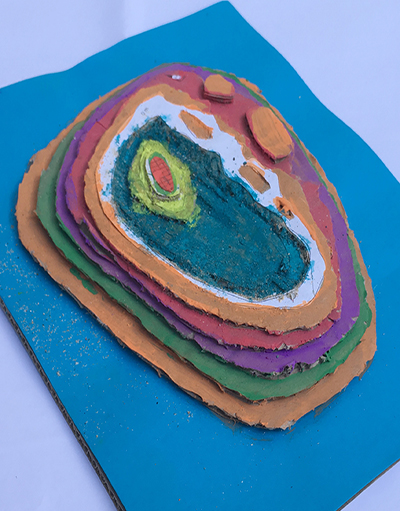1988 The Barrier Reef World 1st Ed

ISBN : 09587840 0 1
Published Date : 01 July 1988
Product Code : 1988 Wet Paper
Format : pdf file for download
By Bob Moffatt
Non-commercial school licence
The publisher and author/s of this pdf file grant to the school a revocable, non-exclusive, non-transferable right and licence to use the content, exercises, lab and field work lesson notes within the school for educational purposes only.
Yearly record keeping
To ensure fair payment is made to collecting societies, educational institutions are to record the digital ISBN above.
- To do this go to the school office and ask the IT department or whoever looks after digital book licences to record the ISBN in the school digital library licence catalogue.
Copyright
Except as permitted by the Copyright Act 1968 (Cth), you may not reproduce any of the contents of this publication, without the written permission of the copyright owner.
The title to, and intellectual property rests with the publisher's author/s, illustrators, photographers and design consultants and nothing in the agreement should be construed as transferring those rights to the school.
Educational exemption
There are exemptions under the Act that allow educational and government use of text, images and music scores for educational purposes.
These exemptions are in Part VB of the Copyright Act 1968 (Cth), where you are entitled to reproduce or communicate 10% of the words or one chapter from this file for educational use within your school. If you wish to reproduce or communicate MORE than 10% contact the copyright owner.
For more information, see www.copyright.com.au and www.copyright.org.au.
Teachers Information
Rationale
The study of coral reefs is important for providing a clear, scientifically-testable record of climatic events over the past million years or so. This includes records of recent major storms and human impacts that are recorded by the changes in coral growth patterns.
Reefs occupy less than 0.2% of the seabed. Yet they run along more than 150 000 km of coastline in more than 100 countries and territories. By their massive formation between the surface and the first few tens of meters deep, coral reefs are a very effective for absorbing elements coming from the ocean.
They absorb waves energy and contribute to environmental protection through the reduction of coastal erosion. They reduce the damage in case of storms, hurricanes, and in some way, the energy of tsunamis. In doing so, they protect both ecosystems located between the reefs and coasts, such as seagrass and lagoon for example, and human settlements located by the sea.
Their impact is so effective that the man mimics immersing concrete structures along some of our fragile coasts. Without this protective role, our Queensland coastline would be a different looking place.
Coral cays are small islands formed of dead coral or coral shingle, either as a result of an old reef being elevated above the sea and then weathered, or from storms tossing coral rubble into a sand cay or reef flat.
From the air, coral cays can be seen forming at one end of reefs. Also, if you have studied another unit in this series called Coastal Physics, you will remember that waves as they pass around a reef bend. This process is called refraction.
A coral reef is living, growing and constantly changing. Waves, especially storm waves, are continually breaking up both living and dead coral and other limestone secreting organisms. Also, thousands of parrot fish are constantly chewing at the coral and breaking it down.
The rubble produced in this way is constantly being ground up and shifted by waves, tides and winds. Over a long period of time this coral rubble can be transported around the cay in the direction of the longshore drift and thrown up as sand by the wind, waves and currents onto the reef top on the sheltered or lee side.
When the rubble and sand are washed together in one spot they form a sand spit which may eventually develop into a true coral island called a cay.
Sand cays are small islands composed of sand which has been deposited by the slowing down of converging currents, and shaped by the action of wind, waves and currents. They are often tempory, especially very small ones which appear and disappear, and when present, constantly change size and shape.
Heron Island, North West Island and Green Island are examples of the many sand cays that are found off Queensland's coast.
Acknowledgements:
Wet Paper Publications would like to thank the following for their assistance in the conception and design of this unit Fabian Fay, Dave Read, Len Zell, Steven Byers, Dianne Hempenstall, Sue Oats, Kelvin Rodgers, Bill Baumann, Merin Kilgour, Dennis Bridger, Sue Cerato, and the students of Benowa State High and Gladstone State High for assisting with the trialling. Sea World Australia, for permitting reproduction of illustrations from their Project Neptune materials.
Contents
This set of notes was written as a work program for students who could not go on school reef trips at the request of MESA Qld members. It was designed to compliment Project Reef Ed which was a set of activities for an on reef excursion.
Page 45 sets this out in Assignment 3 which provides the student with the opportunity to research one or two animals or plants found on the reef and present a short seminar on that chosen animal or plant.
It may be done if you are unable to attend a reef trip and try to make it to Sea World on Queensland's Gold Coast, and complete the Project Neptune project materials.
Chapter 1: Reef formation
Chapter 2: Reefs today
Chapter 3: Coral cays
Chapter 4: Coral reefs
Chapter 5: Some organisms associated with the reef
Chapter 6: Barrier Reef Management
Appendix: Copyright free worksheets


